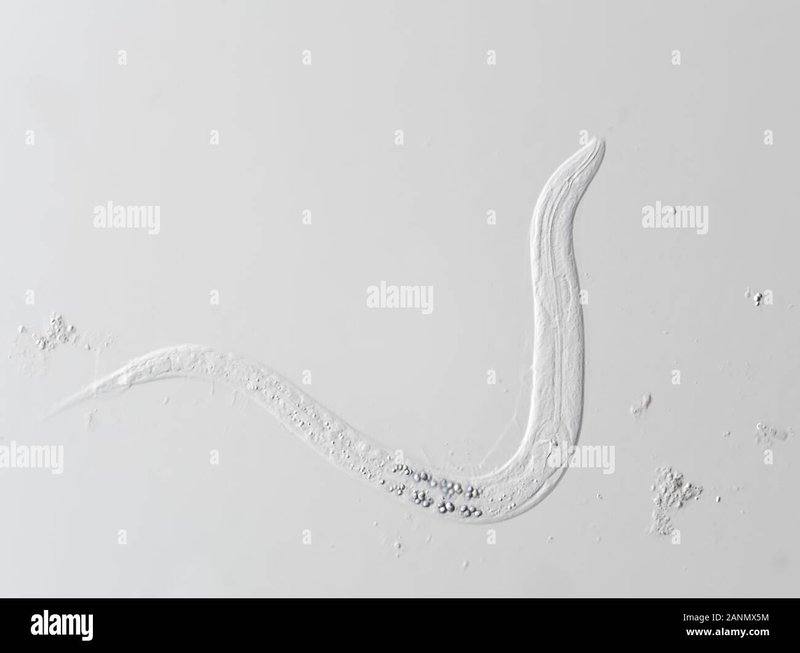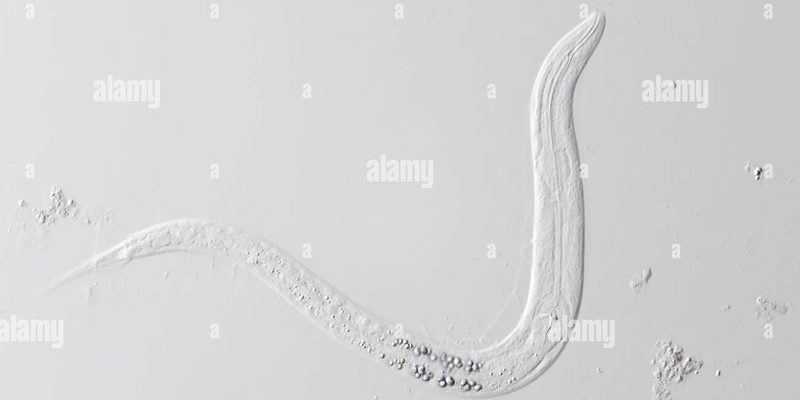
Microworms are really just microscopic nematodes that thrive in moist environments. They’re not just a feast for fish; plenty of other small critters can get in on the action, too. If the idea of cultivating your own live food strikes you as interesting, you’re in for a treat! Let’s dig into what microworms are all about.
What Are Microworms?
Microworms are actually tiny roundworms, measuring about 1 to 2 millimeters in length. They belong to the species *Panagrellus redivivus*, a name that might sound a bit fancy but really just highlights how resilient and adaptable these little guys are. They live in moist environments and feed primarily on yeast and bacteria, making them easy to grow at home.
You might be wondering why these worms are such a big deal in the aquarist community. Well, for one, they’re packed with nutrients. When you feed them to your fish or fry (baby fish), you’re not only giving them a tasty treat but also a healthy meal that supports their growth and development. Honestly, it’s a win-win situation for anyone looking to keep their aquatic friends thriving.
One of the best parts about microworms is how simple they are to cultivate. You don’t need fancy equipment or rare ingredients—just a bit of patience and the right environment. That’s why they’re often recommended for beginners venturing into breeding fish. And guess what? They can thrive in various setups, adding flexibility to your feeding routine.
How to Cultivate Microworms
Growing your own microworms can seem daunting at first, but it’s easier than you might think. Here’s a step-by-step breakdown of how to get started:
1. Gather Your Supplies: You’ll need a few basic items:
– A small container with a lid (like a glass jar or a plastic container)
– A food source, such as oats, yeast, or mashed potatoes
– Water and a bit of sugar (to kickstart the process)
2. Prepare the Medium: Mix your chosen food source with water and sugar until you have a thick paste. You want a consistency that’s not too runny but also not too dry. The microworms will thrive in this mixture.
3. Inoculate the Medium: Add a small amount of microworms (you can purchase these online or from a pet store) into your prepared medium. This is like planting seeds in a garden—you’re setting the stage for growth.
4. Seal and Store: Cover your container with a lid but ensure it’s not airtight. Microworms need some airflow to thrive. Place your container in a warm, dark area and wait patiently.
5. Harvesting: After a few days, you should start to see a wriggly mass swimming at the surface. Use a clean spoon to scoop out the microworms and feed them to your fish. You can repeat this process as needed.
Cultivating microworms is all about trial and error. You might need to tweak your method, but that’s part of the fun. Trust me, once you see your fish happily munching on these tiny treats, you’ll feel a sense of accomplishment.
Why Use Microworms for Your Fish?
Now, let’s talk about why you might want to consider adding microworms to your fish food rotation. The first reason is straightforward: nutrition. Microworms are rich in protein, making them ideal for feeding both fry and adult fish. Young fish especially need protein for healthy growth, and microworms provide just that.
Another great aspect of microworms is that they’re incredibly easy for small fish and fry to consume. Unlike larger food particles that might sink too quickly or get caught in the substrate, these tiny worms float at the water’s surface, making them accessible. This means your fish have a better chance of getting the nutrients they need.
Moreover, raising microworms can offer a solution for those pesky feeding issues that aquarium owners sometimes face. If you have picky eaters or fish that aren’t responding to commercial foods, introducing live food like microworms can stimulate their appetite. It’s like offering a delicious dessert after a not-so-exciting dinner!
Microworms vs. Other Live Foods
You might be considering other live food options like brine shrimp, daphnia, or even fruit flies. Each has its own pros and cons, so let’s compare them to microworms.
– Brine Shrimp: These tiny shrimp are packed with nutrients, but they require more complex preparations. You usually need to hatch them from eggs, which can be a bit more work than simply growing microworms.
– Daphnia: Commonly known as water fleas, daphnia are another popular live food option. They can be a bit larger than microworms, making them unsuitable for very small fish. Plus, they require a larger culture setup.
– Fruit Flies: While not aquatic, fruit flies can be a fantastic food source for some fish. However, they’re more suited for fish that are on the larger side and can take a bit more effort to culture successfully.
In comparison, microworms stand out for their simplicity and ease of culture, particularly for beginners. They’re small, nutritious, and can be fed to a variety of fish species without a ton of hassle.
Troubleshooting Common Issues
Like any hobby, raising microworms may come with a few challenges. Here are some common issues you might encounter, along with solutions to help you out:
– Mold Growth: If you notice mold forming in your culture, it could be a sign of excess moisture or inadequate ventilation. To fix this, try reducing the amount of water in your medium or ensuring proper airflow by either loosening the lid or using a cloth instead of a tight seal.
– Slow Growth: If your microworms aren’t multiplying quickly, check the temperature and moisture levels. They thrive in warm, moist environments, so make sure your setup is in a cozy spot—not too hot and not too cold.
– Disappearing Microworms: If it seems like your microworms are vanishing from the culture, it could be that they’re simply getting eaten! This could mean your fish are enjoying their meals, which is good news! Just ensure you’re harvesting enough for both your fish and the ongoing culture.
With a little practice, you’ll become a microworm expert in no time. The key is to keep an eye on your culture and adapt as needed, just like you would with any other plant or pet.
Wrapping It Up
Microworms are an incredible resource for anyone involved in fishkeeping. They’re easy to grow, nutritious, and offer a dynamic feeding option that can really enhance the lives of your aquatic pets. Plus, there’s something quite rewarding about cultivating your own live food—it feels like a little ecosystem in your home.
So, whether you’re breeding fish, raising fry, or just want to add some variety to your fish’s diet, consider giving microworms a try. With some patience and the right setup, you’ll find that these tiny creatures can make a big difference in your aquarium experience. Happy fishkeeping!

